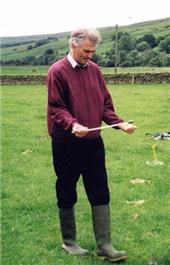Does divining actually work?

Scottish Water © 2004,
a hydrogeologist having a go
at divining
Divining is the method by which some people claim to be able to locate water by walking over an area until they observe a response with an apparatus such as a forked stick, bent rods or a pendulum, usually held in front of them. It is difficult to objectively determine whether divining actually works.
There is at present no scientific explanation as to why it should work and when it has been tested impartially it has been no more successful than would be expected by chance (M. Price 1985. Introducing Groundwater, George Allen & Unwin Ltd.). A water diviner can walk over an aquifer such as the Chalk and predict that water will be found at a certain location; a hydrogeologist knows that a well drilled almost anywhere on the Chalk will encounter some water. The expense is not in finding the water but constructing a borehole to allow it to be pumped out.
However it is not possible to completely discard the subject of water divining. Some people seem to be able to locate buried pipes with the aid of rods or twigs. One theory for this is that the muscles in the body react to some electromagnetic effect caused by the presence of the metal or the water flowing through the pipe; the rods then amplify this effect so that the searcher becomes aware of them. Another theory is that some diviners know from their experience and local knowledge where groundwater is likely to be located and subconsciously cause the reaction.
Whether or not divining actually works is a matter of debate. Even if the electromagnetic theory works for pipes, there is no reason why it should detect the slow, diffuse movement of groundwater.

Print this Page